Jun 21, 2023
My Journey Becoming an Icon Designer
When I began my journey into design, I had no idea that I was on the path into the creative puzzle-like world of icons. Icon design is illustration on the micro-scale, zooming into the wondrous world of pixel rendering, precise paths along a clean grid, and kaleidoscopes of keylines. I never expected I would go from designing cartoony posters to intricate tiny illustrations, but I wouldn't change it for anything!
Humble Beginnings
I first became interested in design when I was in high school. I loved illustrating vector portraits in Inkscape, and decided to run for my school's student council publicity director. In one week, I created about a dozen posters and put them all over my school campus, and won the election for the position. Making all those posters that year was what piqued my interest in design. I was especially interested in becoming a freelancer, since I'd always dreamt of having a job I could perform remotely anywhere in the world.
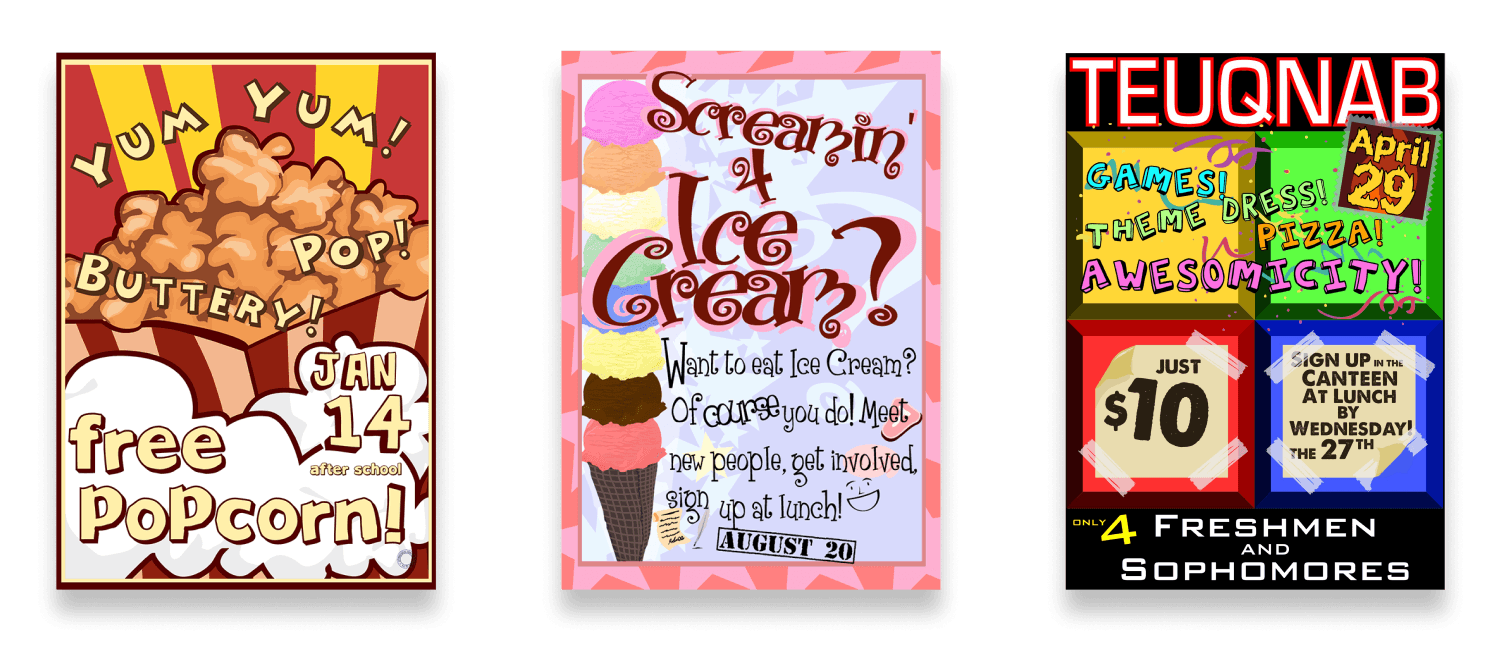
I studied design as an undergraduate student at Biola University. The college didn’t have a design specific major, only a concentration as part of their fine arts program. So I took drawing courses, sculpture, and design principles courses. Those classes gave me a foundation for illustration and art.
In 2015, I had a summer internship at World Vision making social media images and infographics. I learned that the images they were using to represent their areas of humanitarian impact could use better iconography, so I took it upon myself to redesign them. It was my first icon design project, and I loved making those little icons so much! Those icons helped me land my first full time job.
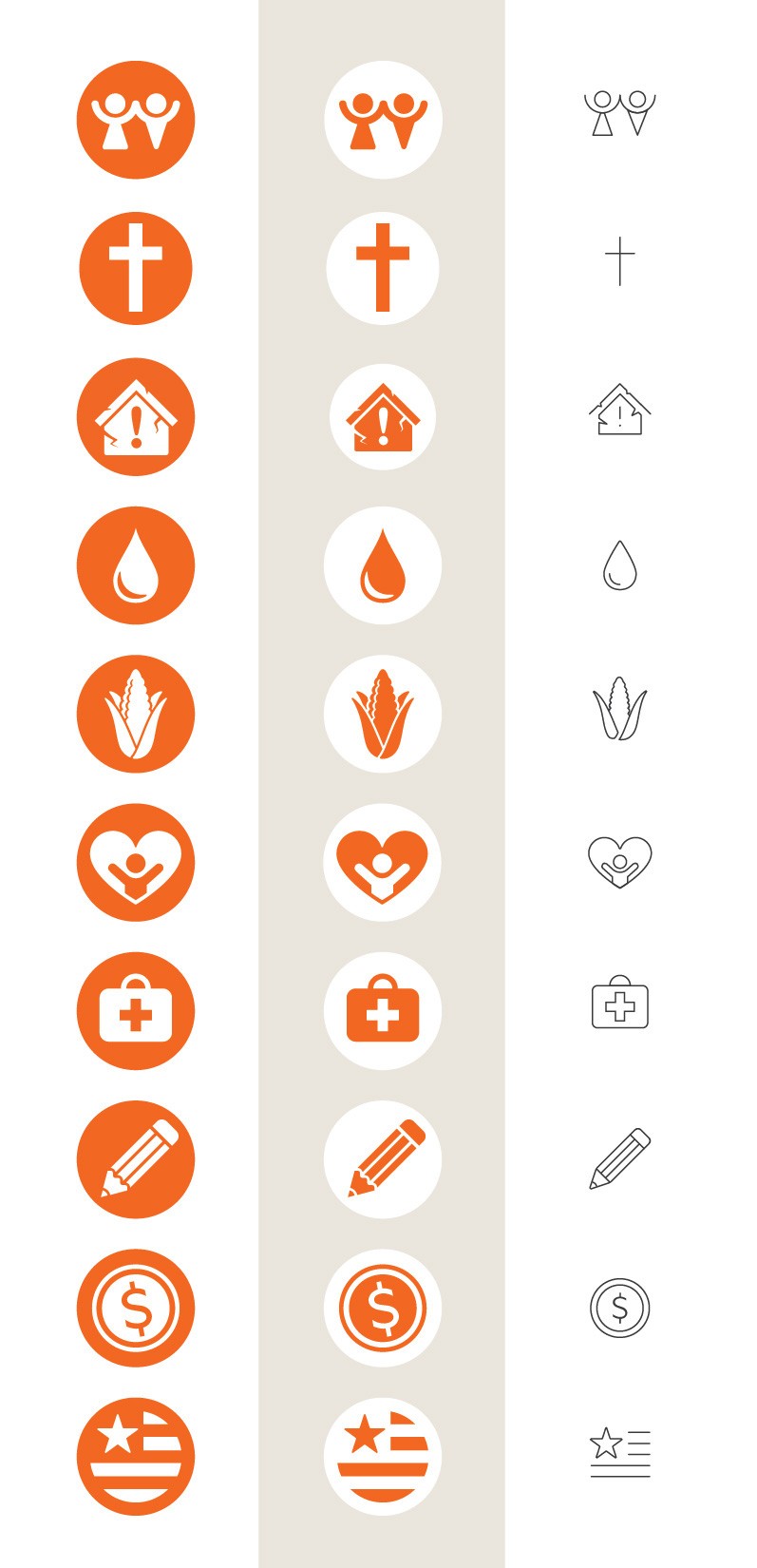
An Icon Design Newbie
Nearing graduation, my design professor connected me with a job opportunity for icon design at Esri, a GIS company. After seeing my work (and a 9-step interview process), Esri hired me as a full-time icon designer for about $35 per hour. There I designed product icons in a variety of styles, brainstormed and developed a marketing icon set from the ground up, wrote style guides, designed empty state illustrations, and much more. I was also managing libraries of icons that contained thousands of assets, which encouraged me to research some time-saving tools. That’s how I discovered Keyboard Maestro, a macro building tool.
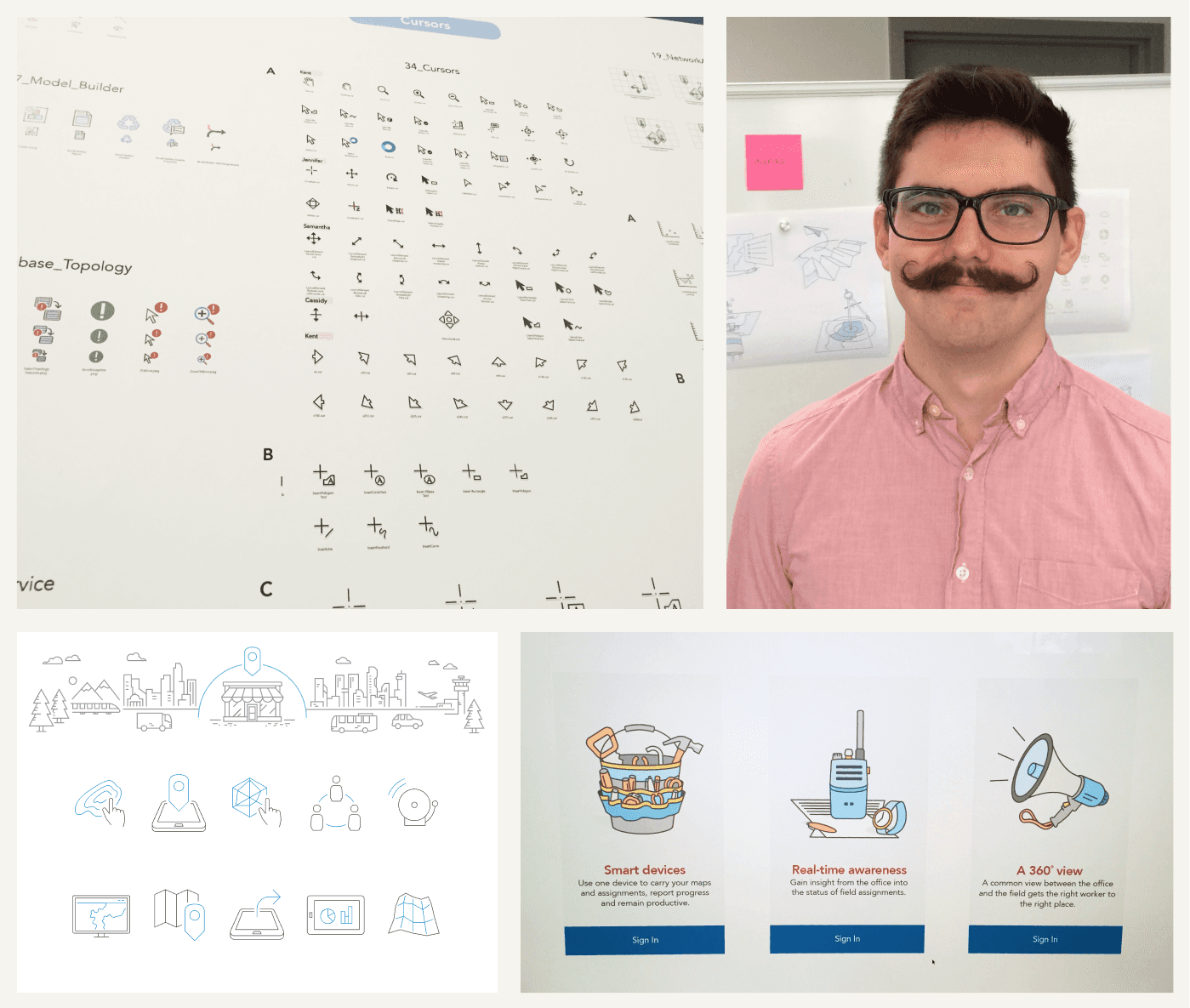
Keyboard Maestro helped me quicken my pace for designing, allowing me to use keyboard shortcuts to click UI buttons or automate tasks. As I grew in understanding of it, I discovered how to automate complex exporting workflows, make adjustments in multiple files at once, easily rename whole series of icons, and in general combine automation with design. With Keyboard Maestro, at times I could work at 10 times the speed doing things manually.
After 5 years at Esri, I came to a point where I needed change. I didn’t receive a promotion I was expecting, even though I was leading our team in several areas and many others in the department assumed I was more senior. I was frustrated feeling like I constantly had to prove myself, and was so defeated that I decided to quit. I was fortunate at the time to have the support of my girlfriend (now my wife) and her family as I figured out what to do next. I spent months trying new things, like film acting, voice acting, and starting a freelance design business all at once. Looking back, I should have just rested a while and give myself time to de-stress, but I wasn’t used to staying still. Then, in November of 2021, I received an opportunity to contract for Twitter.
Contracting and Freelancing like a Pro
As soon as the design systems team at Twitter saw my icon design and automation skills, they were excited to bring me on board as a contractor for $65 per hour. For the next 8 months, I designed new product icons in two icon styles, designed dozens of emojis, and built a new presentation icon style. It was a pleasure working on a new team that celebrated my talents and gave me free reign to use my time as I wished. In a sense, I got the taste for freelancing there as I was able to set my own schedule and work at my own pace.
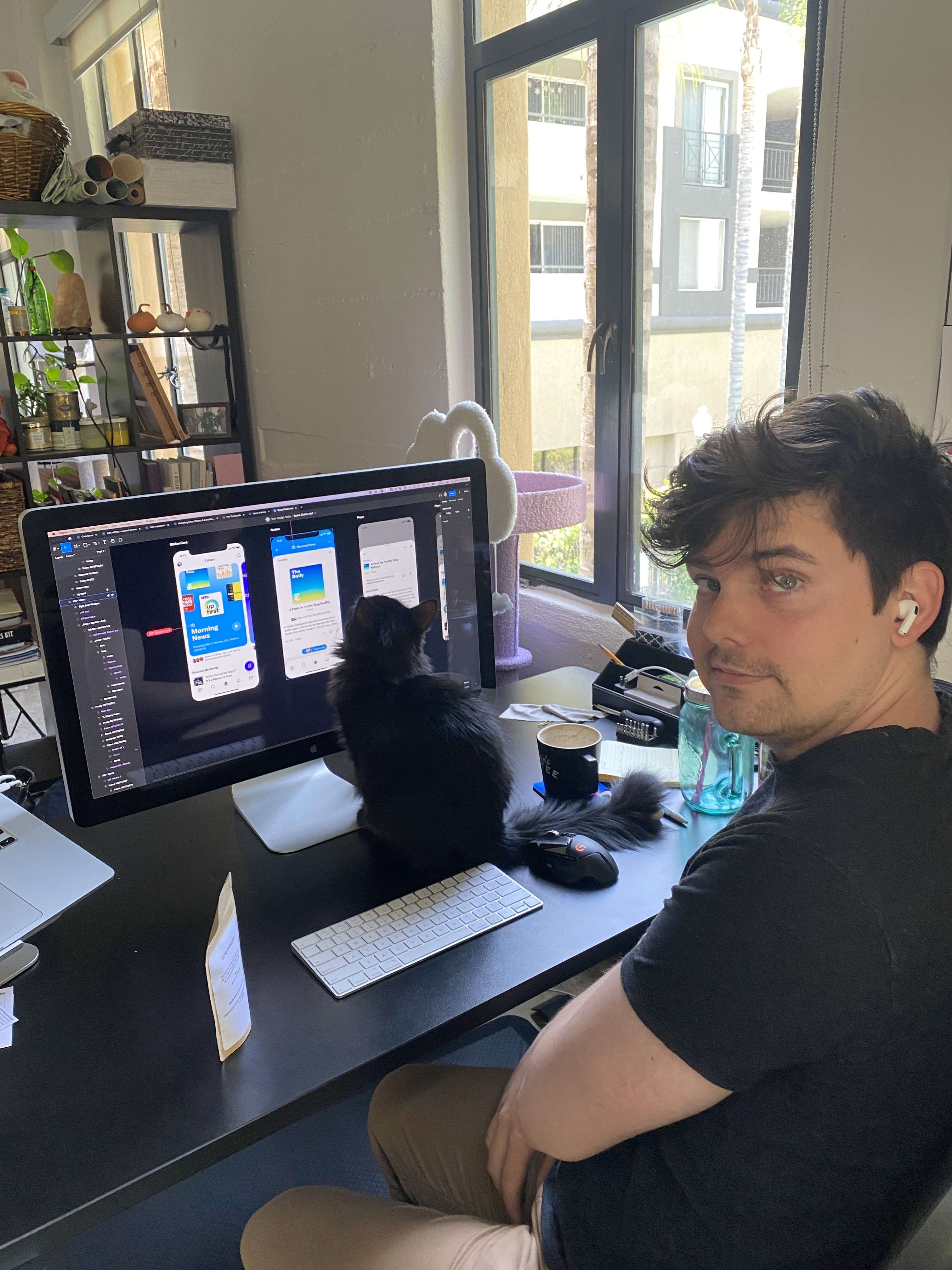
In the spring of 2022, Elon Musk acquired Twitter, right as I was getting settled. I had been hoping to stay on with Twitter, but by the end of the summer, Twitter was going through a huge overhaul. Massive layoffs and cuts had been initiated, many of my colleagues were taking positions at other companies, and as expected Twitter chose not to renew my contract. But if my contract had been renewed, I would have never been thrown into the world of freelancing.
As I began my job search, I was invited to a group of icon designers. Through that group, I connected with Bonnie Kate Wolf, a prominent icon designer in the industry. She hired me as a subcontractor for some of her projects. With her help, I began my freelance journey, and soon after landed my first freelance contract.
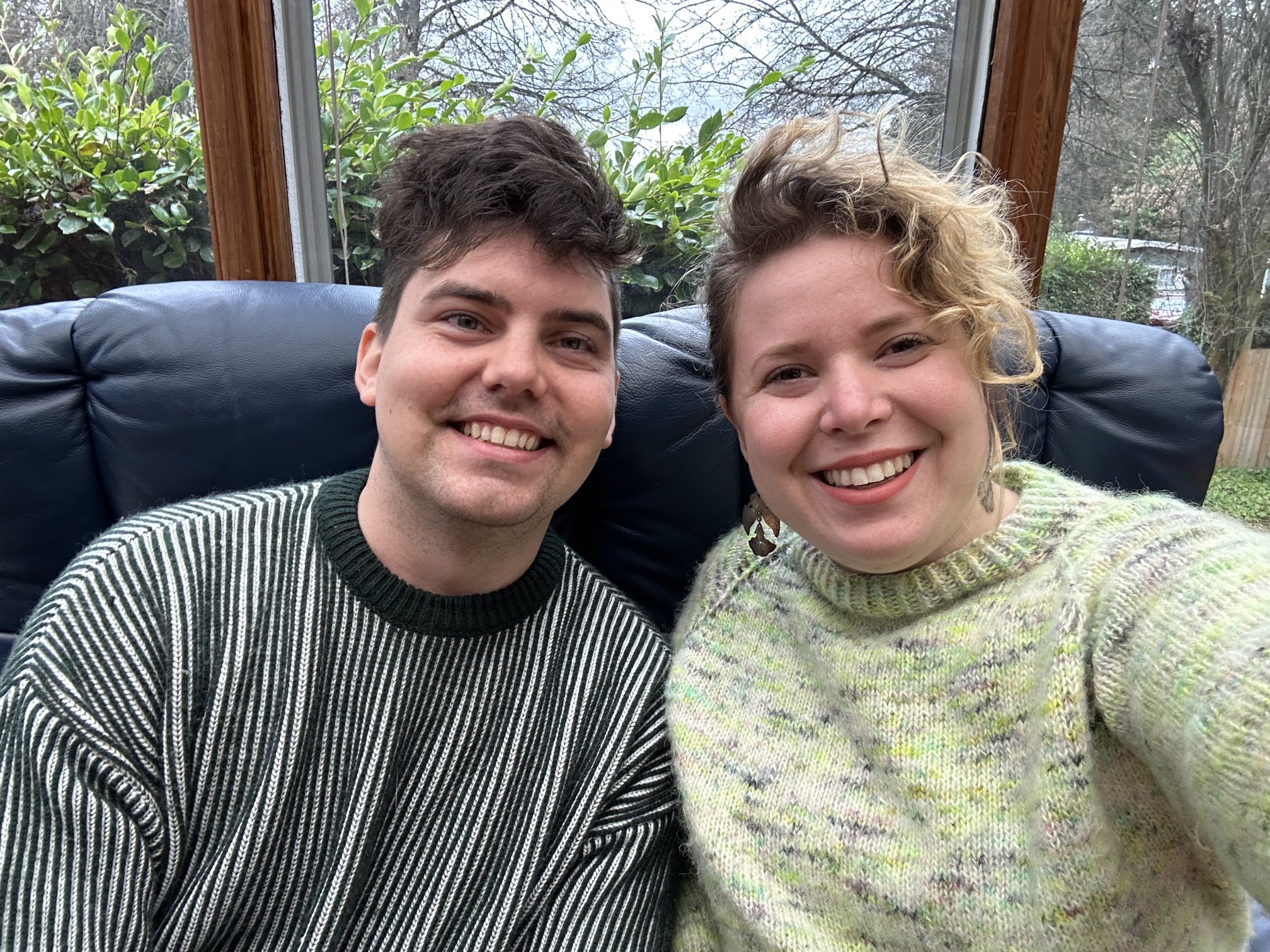
In early 2023, I received a contract to work with Lingraphica, an audio-assistance device company. I also received a contract with Netflix to do production icon work on around 4,500 icons with the recommendation of Bonnie Kate. With Netflix, I built macros to automate complex series of tasks at scale, automate documentation on spreadsheets, and do precise accurate production work on thousands of icons. With the combination of those two jobs, on some weeks I was making around $6,200 per week, averaging about $155 per hour. Even though some days had a lot of work, I was making more than I ever thought possible as an icon designer. But even now, the story is being written, so stay tuned for what’s next!
Conclusion
So there you have it, the journey from a lowly design intern to a professional freelancer 10 years later. I hope that my story was inspiring for you, and may encourage you to pursue the art and science of icon design!
If you have any other questions, feel free to reach out at grifflecuyer@gmail.com
Want to read more?
I like to write about icon design, so if you'd like to learn more about my craft and my process, check out my articles section. If you want to see more of my work, then click on one of my other case studies. If you're interested in working together, then contact me and we'll get started!
Case Studies
Comments
